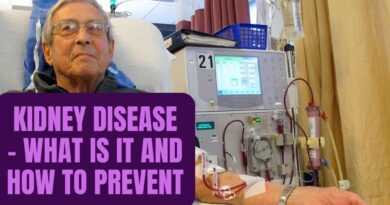Heat Stroke – The Ultimate Guide for summer
In today’s article, we will explore the topic of heat stroke, its causes, symptoms, and the necessary precautions to prevent it. Heat stroke is a serious medical condition that can occur when the body overheats due to prolonged exposure to high temperatures or strenuous physical activity in hot environments. Let’s delve into the details and learn how to stay safe in scorching weather.
Introduction
As summer approaches, it’s crucial to be aware of the potential dangers of heat stroke. This condition occurs when the body’s internal temperature rises to a dangerously high level, affecting vital organs and the central nervous system. Heat stroke requires immediate medical attention and can be life-threatening if left untreated.
What is Heat Stroke?
Heat stroke is the most severe form of heat-related illness, characterized by a core body temperature above 104°F (40°C). The body’s natural cooling mechanisms, such as sweating, become ineffective, leading to a rapid increase in body temperature. Heat stroke can affect anyone, but certain groups, such as the elderly, athletes, and individuals with certain medical conditions, are more susceptible.
Symptoms and Warning Signs
Recognizing the symptoms and warning signs of heat stroke is crucial for timely intervention. Some common indicators include dizziness, confusion, hot and dry skin, rapid heartbeat, throbbing headache, and nausea. If you or someone around you experiences these symptoms, it’s essential to take immediate action to prevent further complications.
Causes of Heat Stroke
Heat stroke can occur due to various factors, including prolonged exposure to high temperatures, especially in hot and humid climates. Engaging in strenuous physical activities, particularly without adequate hydration and rest breaks, can also increase the risk. Additionally, certain medications and medical conditions can impair the body’s ability to regulate temperature, making individuals more susceptible to heat stroke.
Risk Factors
Several factors contribute to the risk of heat stroke. Age plays a significant role, as older adults are more vulnerable due to a reduced ability to regulate body temperature. Certain occupations that involve working outdoors or in hot environments also increase the risk. Other risk factors include obesity, dehydration, alcohol consumption, and certain medications.
Prevention and Precautions

Preventing heat stroke begins with taking proactive measures to stay cool and hydrated. It’s crucial to drink plenty of water throughout the day, especially when spending time outdoors or engaging in physical activity. Wearing lightweight and breathable clothing, using sunscreen, and seeking shade whenever possible can also help prevent heat stroke. Additionally, it’s essential to be aware of the weather forecast and plan outdoor activities accordingly.
How to Treat Heat Stroke
If someone is experiencing symptoms of heat stroke, immediate medical attention is necessary. While waiting for professional help to arrive, move the individual to a cool and shaded area, loosen tight clothing, and apply cool water or ice packs to help lower their body temperature. It’s important not to provide fluids orally unless directed by a healthcare professional.
The Importance of Hydration
Proper hydration is vital in preventing heat stroke. When the body loses more fluids than it takes in, dehydration can occur, making it more challenging for the body to cool down effectively. It’s recommended to drink water regularly, even when not feeling thirsty, and to avoid excessive consumption of alcohol and caffeinated beverages, as they can contribute to dehydration.
Heat Stroke vs. Heat Exhaustion
Heat stroke and heat exhaustion are two heat-related conditions that often get confused. While heat stroke is a medical emergency, heat exhaustion is the precursor to it. Heat exhaustion shares similar symptoms but is less severe. Recognizing the differences between the two can help in providing appropriate care and taking necessary precautions.
Common Misconceptions
There are several misconceptions surrounding heat stroke. One common myth is that heat stroke only occurs in extremely hot weather, but it can happen in milder temperatures as well. Another misconception is that only outdoor activities can lead to heat stroke, whereas indoor environments without proper ventilation or cooling can also pose risks. It’s important to dispel these misconceptions and be aware of the potential dangers.
The Impact of Heat Stroke
Heat stroke can have severe consequences on the body, ranging from organ damage to neurological impairment. If left untreated, it can lead to complications such as kidney failure, muscle breakdown, and even death. Understanding the seriousness of heat stroke emphasizes the importance of prevention and early intervention.
Tips for Staying Cool in Hot Weather
To stay cool during hot weather, it’s essential to take specific precautions. Some tips include staying in air-conditioned environments, using fans, taking cool showers, avoiding strenuous activities during peak heat hours, and wearing lightweight, breathable clothing. Additionally, consuming hydrating foods and beverages, such as fruits and vegetables, can help regulate body temperature.
Conclusion
Heat stroke is a serious medical condition that requires our attention, especially during hot summer months. By understanding the causes, symptoms, and prevention strategies, we can protect ourselves and others from the risks associated with heat stroke. Remember to stay hydrated, seek shade when needed, and be proactive in creating a safe and cool environment during hot weather.
FAQs
Can children be affected by heat stroke?

Yes, children are susceptible to heat stroke, especially if they engage in vigorous physical activity without proper hydration and rest. It’s essential to monitor children closely during hot weather and ensure they have access to shade and plenty of fluids.
Are there any long-term effects of heat stroke?
In some cases, heat stroke can lead to long-term complications, such as organ damage or neurological issues. However, with prompt medical intervention and appropriate treatment, the chances of long-term effects can be minimized.
Can medications increase the risk of heat stroke?
Certain medications, such as antihistamines, diuretics, and beta-blockers, can impair the body’s ability to regulate temperature. If you’re taking medication and have concerns about heat stroke, consult your healthcare provider for personalized advice.
Is it possible to prevent heat stroke completely?
While it may not be possible to eliminate the risk of heat stroke entirely, taking preventive measures significantly reduces the chances of occurrence. By staying hydrated, avoiding excessive heat exposure, and being aware of the warning signs, you can minimize the risk.
What should I do if I witness someone experiencing heat stroke symptoms?
If you notice someone showing symptoms of heat stroke, immediately move them to a cool area, call for medical assistance, and provide basic first aid, such as applying cool water or ice packs to help lower their body temperature.
FOR MORE SUCH ARTICLE CLICK HERE
Please contact Dr Sandeep Ojha for further details and consultation




